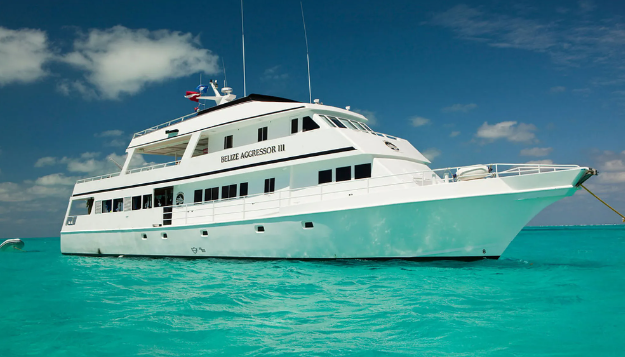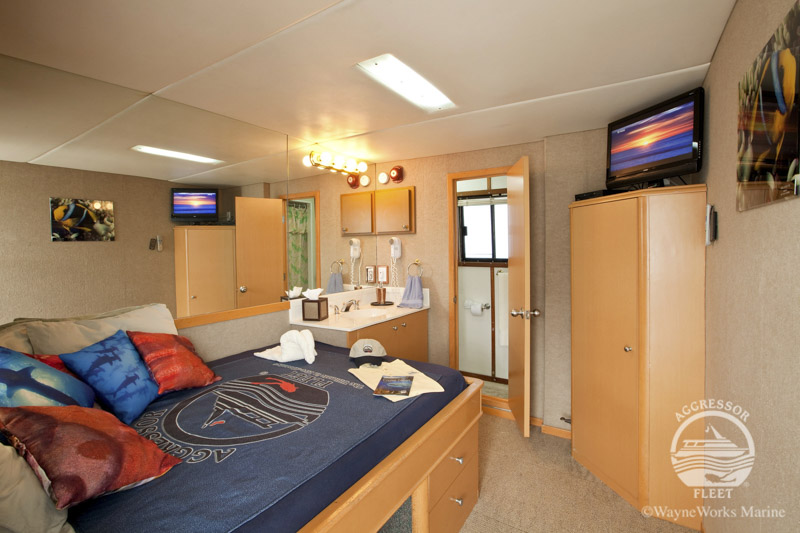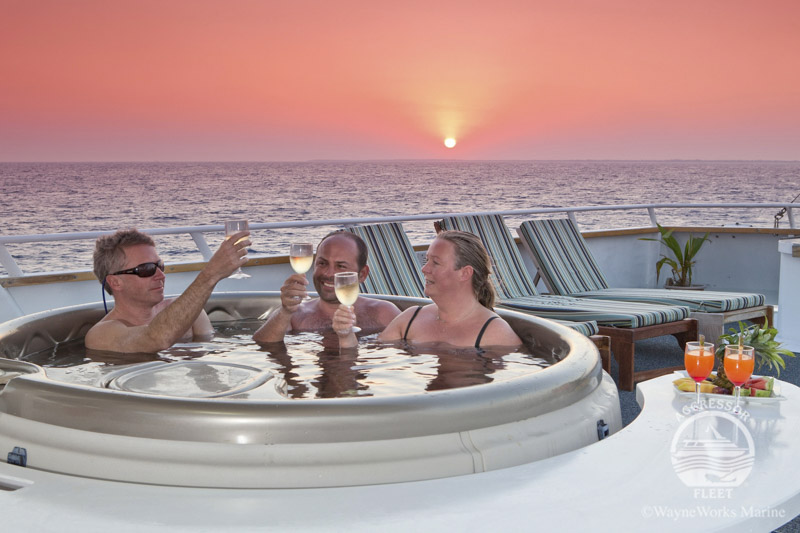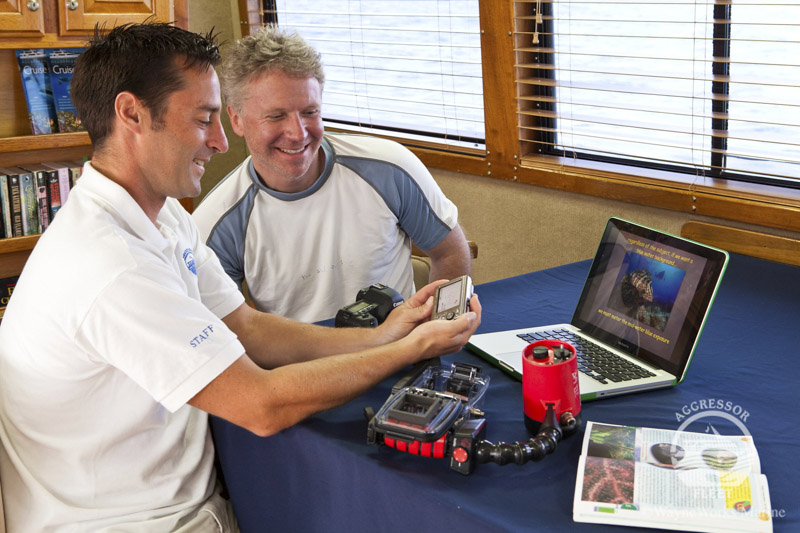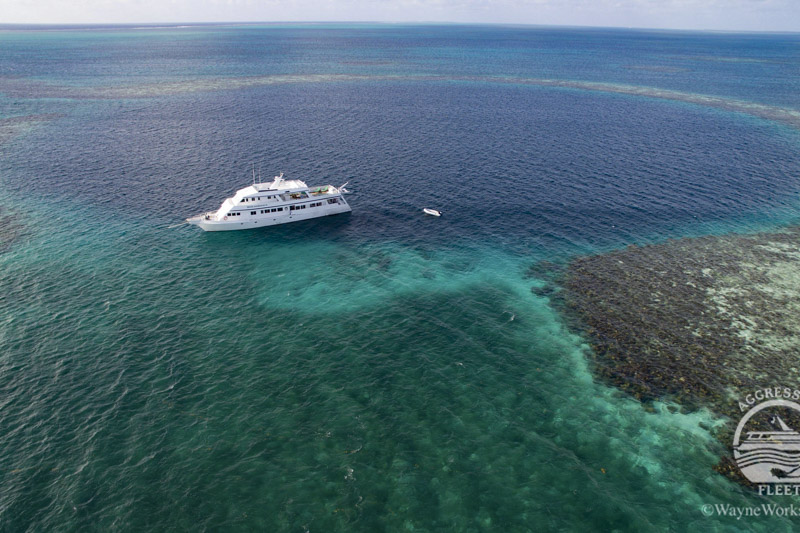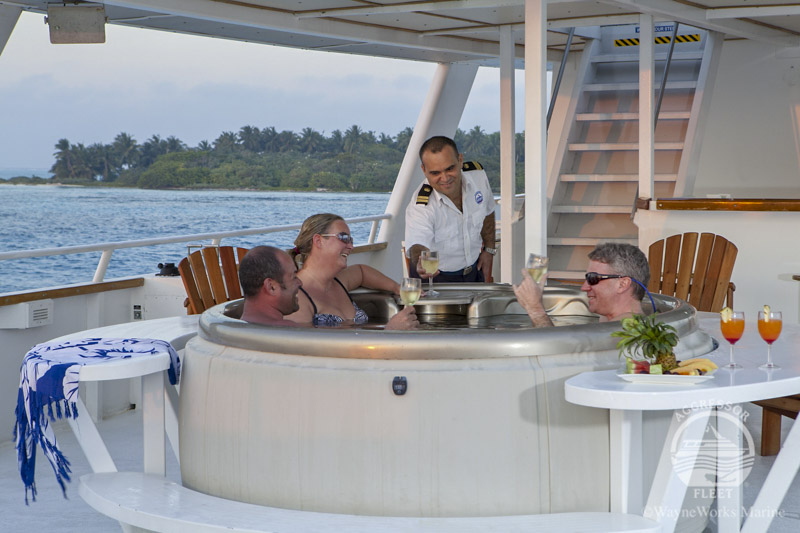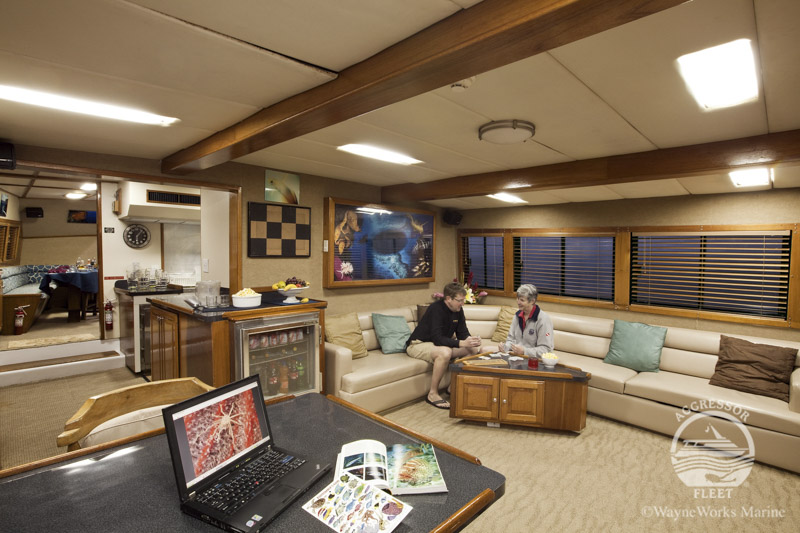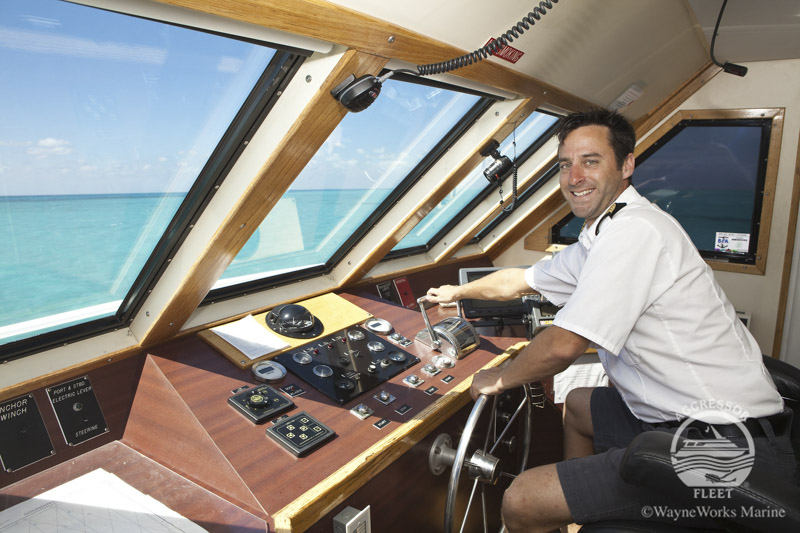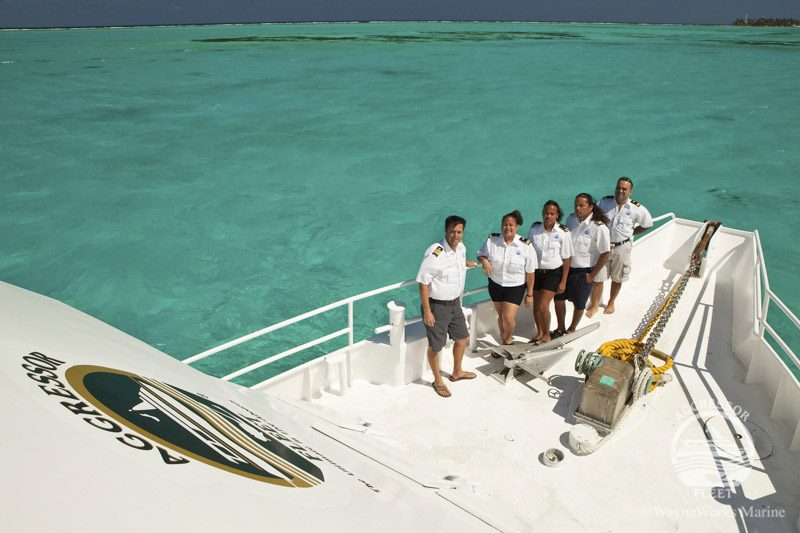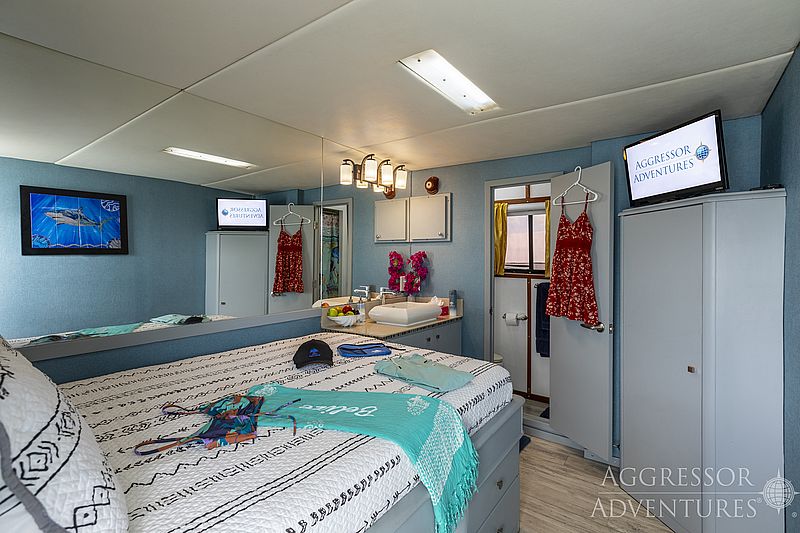Impressionen: Belize Aggressor III
Angaben zum Schiff
Technische Daten des Bootes
Kabinentypen & Details
Master
Kabintyp Details
Bathroom
Deluxe
Kabintyp Details
Bathroom
Routen und Details
Belize
Mehr erfahren
Jeden Samstag um 18 Uhr legt das Tauchsafariboot vom Radisson Ft. George Dock ab, das sich im Herzen der Innenstadt von Belize City befindet, um eine Woche lang problemlos zum Lighthouse Reef, Half Moon Cay und dem berühmten Blue Hole zu tauchen. Das mystische Blue Hole, ein eingestürztes Süßwasser-Höhlensystem, ist ungefähr 1000 Fuß breit und über 400 Fuß tief. Berühmt wurde das Blue Hole durch den Meerespionier Jacques-Yves Cousteau, der es zu einem der zehn besten Tauchplätze der Welt erklärte. Im Jahr 1971 brachte er sein Schiff, die Calypso, zum Blue Hole, um dessen Tiefen zu erforschen. Beim Abtauchen in das Blue Hole sehen die Gäste wunderschöne vertikale Stalaktitenformationen.
Die Tauchsafaris in Belize beginnen am Sonntagmorgen und enden am Freitag vor dem Mittagessen, wenn das Schiff in den Hafen zurückkehrt. Von Sonntag bis Donnerstag kann den ganzen Tag über unbegrenzt getaucht werden und jeden Abend findet ein Nachttauchgang statt. Freitag wird ein halber Tauchtag angeboten. Eine Reise in dieses mittelamerikanische Paradies ist nicht vollständig ohne einen Besuch der Maya-Ruinen von Belize, eine Höhlentubing-Fahrt durch den Dschungel oder eine Canopy-Tour durch die Baumkronen. Die Touren werden am Freitagnachmittag angeboten, aber es empfiehlt sich ein längerer Aufenthalt, um die Wunder von Belize und seiner Ecke der Karibik in vollen Zügen zu genießen. Gäste können den Pool- und Barbereich des Radisson Ft. George Hotels am Samstag kostenlos nutzen.
Glovers Reef
Mehr erfahren
The atoll forms part of the outermost boundary of the Belize Barrier Reef, along with Turneffe Atoll and Lighthouse Reef. Because the atoll is remote and protected, many of the islands have virtually uncharted, virgin habitats and spectacular diving. This adventure features diving on shallow walls, healthy reefs, and the chance to see abundant pelagic animals including large sharks and rays.
Dive Sites: BAKING SWASH REEF - Sunday morning guests will start their trip with a check-out dive at Baking Swash, a narrow cut through the western edge of the atoll. Two weathered tree limbs frame the channel’s beauty on each side. The shallow coral reefs break the surface, thriving in the protected waters.
SPLIT REEFS - This 40-foot (12 m) deep reef reaches to the surface with a deeper reef dropping down along a 100-foot (30 m) wall. This dive site offers rare specimens of healthy corals such as endangered elkhorn coral, boulders of brain coral, large cactus corals, and delicate staghorn corals together form intricate thickets. An array of soft corals and gorgonians like colorful sea whips, sea rods, corky sea fingers, and Venus sea fans also sway across the reef. A kaleidoscope of shimmering, small fish school together – blue chromis, sergeant majors, and blue-headed wrasse glide over and through the corals.
SHARK POINT - Shark Point is one of the more remote dive sites around the atoll; visits are weather permitting, only. It is an exposed area with a rare spawning aggregation site for groupers. Several species of sharks are associated with this dive site including nurse, blacktip, hammerhead, and tiger sharks. Sharks can be seen cruising along the sloping white sand channels and over the coral colonies.
GROUPER FLATS - This dive site is located on the northeastern reef tract and is home to several species of grouper. Both the shallow and deeper reefs here are home to rare, mature elkhorn coral and huge colonies of lettuce coral. The gentle topography of this amazing reef is home to Nassau, tiger, black, spotted and marble grouper often seen resting amid the sea whips and gorgonians.
LONG CAYE WALL - Long Caye Wall is a beautiful dive site with dense coral growth including endangered elkhorn coral. Forty feet (12 m) down, divers see garden eels, rays, gleaming schools of fish in the water column and smaller fish hovering over on soft sandy bottom. The vertical drop here has many overhangs adorned with giant, colorful sponges, black coral, and wire corals. Sea turtles, eagle rays, manta rays, and curious barracudas are regular visitors all along the wall.
SOUTH WEST CAYE WALL - The Southwest Caye Wall is a dramatic drop-off from its crest at 50 feet (15 m) down to an underwater cliff at 130 feet (40 m) deep. This dive site is characterized by boulder coral, wire coral, and spectacular sponges.
EMERALD FOREST REEF - Emerald Forest Reef is named for the huge elkhorn coral colony that dominates the shallow reef crest creating a large canopy of golden coral. Nearby, divers often see snappers, groupers, trunkfish, angelfish, lobsters, traveling schools of wrasse and clouds of blue chromis amidst the large basket, tube, and rope sponges.
